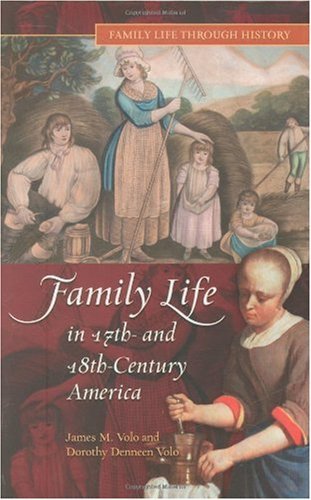Immigration and Settlement:
- There were seven major groups to migrate to British North America in the 17th and 18th centuries: four different waves of Britons (Puritans, Royalists, Quakers, and Scotch-Irish), the Dutch, the Germans, and the Africans. While there were other minority groups, if you have colonial ancestry, they were likely British, Dutch, German, and/or African.
- The British mostly settled in New England, the wider area of the Colony of Virginia (not the state), the lower Delaware River Valley, and the back country of Georgia and the Carolinas.
- The Dutch mainly settled in New Amsterdam and along the Hudson River.
- The 18th century saw the flood of German speakers who settled in Pennsylvania, New Jersey, and New York.
- Most Africans were of course brought over unwillingly as slaves but recent research suggests a minority may have been indentured servants or even free craftsmen.
- About 250,000 people left Britain between 1607 and 1660, though not all went to North America, more than 100,000 went to the Caribbean and another 100,000 to Ireland.
- Most recent research (keeping mind this was released in 2005) estimates the number of Africans slaves brought over to North America was around 400,000.
- 39% of immigrants were between 25 and 59 years old, 35% were between 14 and 24 years old, 25% were children under 14, and only 1% was over 60.
- Women and girls made up nearly half of the early English colonies (versus the near-absence of female immigrants to New France and New Spain), though Virginian immigrants were dominated by single men while family units of immigrants were more common in New England. By the late colonial period, men outnumbered women 3 to 2.
- The first mass migration was in 1630 with 700 Puritans to Plymouth. By 1640, more than 21,000 people had come to New England.
- Of the approximately 200,000 people who crossed the Atlantic to settle in British North America in the 17th century, sixty percent (120,000) went either to Virginia or Maryland. The peak period of this immigration was during the three decades after 1630.
- More than 20,000 immigrants went to Massachusetts between 1630 and 1640 but then, during the English Civil War, there was a reverse flow of immigration as a third of Puritan males returned to England to fight in the Parliamentary armies. During the Commonwealth, many Royalists and Catholics immigrated to Virginia and Maryland.
- 23,000 Quakers from England and Wales immigrated to the Delaware Valley between 1675 and 1715 after much religious persecution. As pacifists, they encouraged religious tolerance and actively sought out immigration from diverse religions and had good relations with the natives.
- Plymouth, Massachusetts Bay, New Haven, Connecticut, and Rhode Island were established by Puritans, Maryland by Catholics, and Pennsylvania by Quakers. After the Restoration, many Royalists in Virginia and the Carolinas were more interested in trade and farming than religious freedom.
- Prior to 1660, the numbers of immigrants to Virginia and the Carolinas was about 45,000 but by 1660 the population was reduced in half by disease, starvation, and Indian attack.
- Scotch-Irish were around 50,000 Presbyterian Scots who immigrated to Ulster, Ireland under the encouragement of James I. But after suffering religious persecution by Catholics and the loss of their political influence with the death of the last Stuart monarch in 1715, as well as a series of bad harvests, they began to move to the colonies, settling mostly in the Appalachian back country of the south (and making up more than 90% of the population in those areas, the small remainder being German speakers) from 1718 to 1775, though the first settlement was in 1632 along the east coast of Maryland. Those arriving after 1728 gravitated towards Maryland, Virginia, and the Carolinas. Total number of Scottish immigrants may have been as high as 250,000.
- In the 18th century, the Dutch influence was so strong in New York and into the Delaware Water Gap that some families with English roots were attending Dutch church and speaking the Dutch language within two decades of their arrival.
- The first German-speakers began arriving in Pennsylvania around 1683 in search of religious tolerance but a larger group of more than 2,000 from the Palatinate went to New York in 1710 after the worst agricultural season in modern European history. Many migrated from there to Pennsylvania but some travelled up the Hudson River. From 1717 through the next 50 years saw the biggest migration of German speakers, in one year alone there were nearly 12,000 who arrived in Pennsylvania. Somewhere between 2,000 and 4,000 were Mennonites.
- Most German immigrants were from the lower Rhineland (about 42% were from the Elector Palatinate) but some people identified as German were actually from Switzerland, Alsace, Westphalia, Silesia, Saxony, or other Teutonic regions.
- The lineage of most African Americans can be traced to only a few dozen tribes from the western part of Africa who were mostly agricultural and often already more knowledgeable about farming than their white masters.
I hope you find these facts as interesting and helpful as I did! More to come soon...


Thanks for a very interesting and informative post! I wonder, though, how many early Rhode Islanders would have identified themselves as Puritan. Many of them were ejected from, or left Massachusetts and the other Puritan colonies because they diverged too far from Puritan beliefs and practices.
ReplyDelete